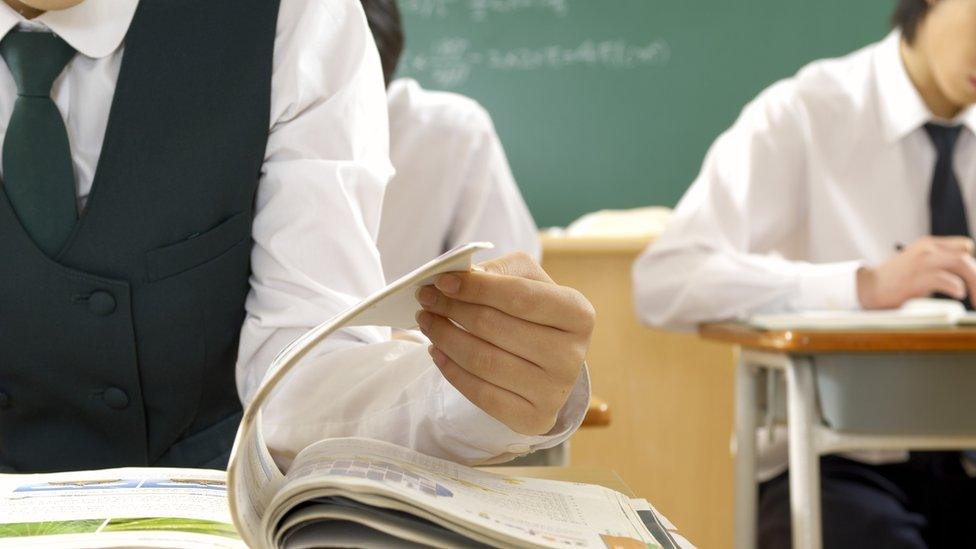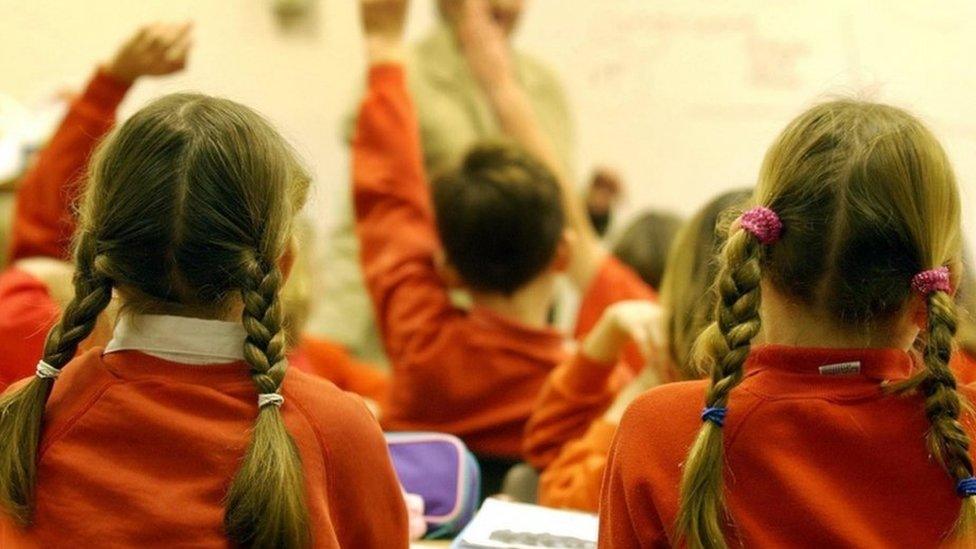School funding: Calls to overhaul system in Wales
- Published

How much classroom cash is available depends on where you are in Wales
The school funding system in Wales needs an urgent overhaul, according to an education union after an official report reviewed spending.
The study found spending on Wales' most deprived schools had not increased as much as expected.
The analysis suggested there needed to be a "more consistent and transparent" funding formulae across local councils.
Ministers said the review was "important", especially as local authorities faced pandemic pressures.
The study was commissioned by the Welsh Government, external and carried out by economist Luke Sibieta.
Despite being mainly completed before the pandemic, it acknowledged the "profound implications" of Covid-19 on school resources.
It said there was strong evidence higher school spending leads to improved later life earnings, particularly for pupils from poorer backgrounds.
Total spending on schools in Wales was £2.6bn in 2018-19 or about £6,000 per pupil - 6% lower in today's prices than the figure for 2009-10.
Spending per pupil was about £650 higher in the most deprived 20% of primary schools, compared with the least deprived.
In the most deprived areas, spending in secondary schools was about £700 higher for pupils.
But the report said differences in spending outside the most deprived schools was "relatively small".
The report's author said this raised concerns about "whether schools with above average (but not the highest) levels of deprivation were receiving sufficient levels of funding".
Under a scheme known as the Pupil Development Grant (PDG), schools are given £1,150 a year for every pupil who is eligible for free school meal.
Extra cash is also available for looked-after and adopted children, and for the under-fives.
But the report found despite the introduction of the PDG in 2012, extra funding for more deprived primary schools had not grown over the last decade.
Funding for the more deprived secondary schools had grown "but not as much as one would predict given the introduction of the PDG".
Funding for schools in poorer areas in Wales was also lower than it was in England, according to the report, prompting a recommendation the Welsh Government prioritises extra funding for more deprived schools.

There is more money being spent in deprived areas - but questions remain over whether it is enough
There were also differences in funding from council to council in Wales.
Total spending per learner in primary and secondary schools was about £300 above the national average in Ceredigion, Conwy, Caerphilly and Blaenau Gwent, and about £200 or more below the national average in Newport, the Vale of Glamorgan and Flintshire.
The main driver of school costs will be the level of teacher pay, the report said, and particularly the extent to which Wales follows the commitment in England to increase teacher starting salaries to £30,000 by 2022.
The report estimates that would drive up school costs by about 8% per pupil by 2022-23.
Teaching union UCAC said councils and the Welsh Government should address the recommendations as "a matter of urgency".
Calling for a funding overhaul, the Association of School and College Leaders (ASCL) Cymru said steps were necessary "to ensure that as much funding as possible gets to the front line where it is most needed".
Wales' Education Minister Kirsty Williams said the pandemic had put "unprecedented strain" on public sector budgets.
"I am fully aware of the real pressures that local authorities and schools are now facing as a consequence of the pandemic - such challenges make it even more important that a considered review of the school funding system has been undertaken to ensure it is well-placed to assist policymakers as we move forward," she said.
"Now, more than ever, we need to understand the funding decisions made across Wales to secure equity and excellence for our learners."
- Published13 January 2020

- Published9 April 2019

- Published20 June 2018

- Published25 October 2018
